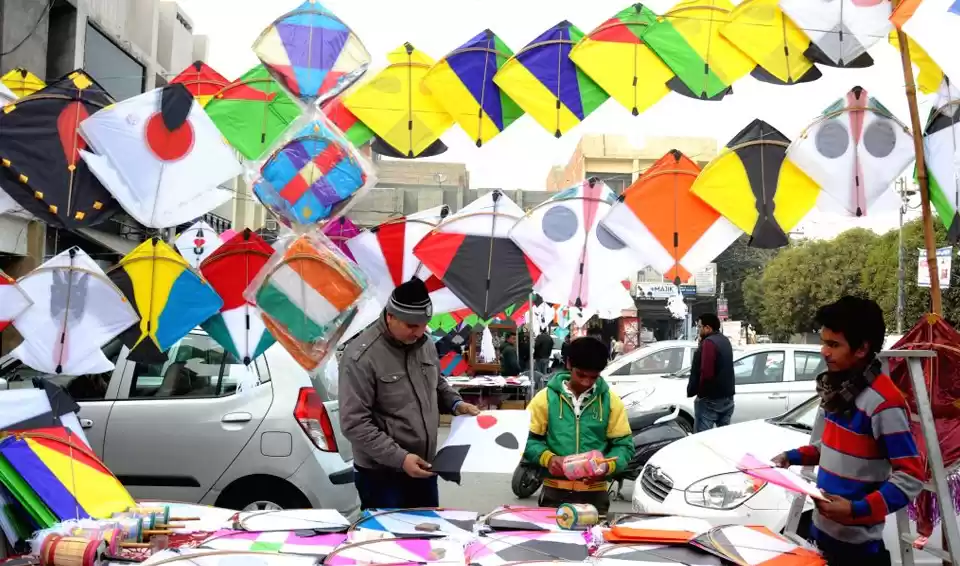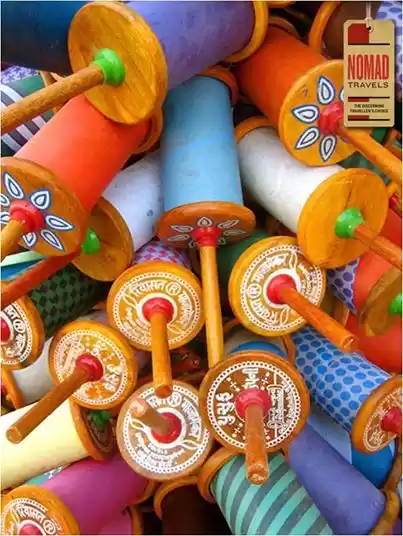As our quest for all things traditional that are losing themselves to the chores of time continues, we decided to head towards Purulia in Bengal, this year, to witness the Tusu Festival.
Tusu Festival or Tusu Parob is a harvesting festival celebrated in the Chhota Nagpur region of Eastern India that includes Purulia, Bankura, Medinipur in West Bengal and parts of Bihar, Jharkhand and Odisha.
The last days of the Bengali “Poush” month always call in for a great feast of “pithe” and “patisapta”. The month-end also called the “Makar Sankranti” also calls for a number of celebrations across rural Bengal. So when Uttara Di graciously accepted our invitation to go to Purulia with us, there was little reason for us to not to visit Deulghata for the Tusu Parob. Further, visiting the age-old Deuls (temples) of Purulia was an added attraction.

What is Tusu Parob or Tusu Festival?
As I stated, Tusu Festival is a harvest festival. It begins on the last day of the Bengali month of Aghrayan (mid-December) and continues through the month of Poush, ending on Makar Sankranti. This day also marks the last day of winter harvesting and also the end of the agriculture year.
Tusu Festival is celebrated in different ways across the state. In Bankura and some other parts, Tusu is worshipped in round terracotta pots surrounded by lamps. In Purulia and some parts of Bihar and Jharkhand, it is celebrated around Chaudal (a rectangular structure made of bamboo and coloured papers). In Medinipur and some other areas of Bankura, Tusu is represented as a tiny doll, while in the Sunderban area, Tusu is depicted as Goddess Lakshmi.

Tusu Festival at Deulghata, Puruliya
Tusu at Deulghata is definitely a display to behold. With the morning mist still hovering above the Kansabati, we reached Deulghata. Tusu also calls for much fanfare among the villagers. The place around the Deulghata temples was getting decked up for the village fair. The villagers have already come with their merchandise and were setting up their stalls. Why so many stalls for a village fair? I wondered.
Well, I did get the answer in the afternoon when the whole place was filled with people all around. Festivals are for spreading happiness, a time when people forget their worries, dress in their finest to meet and greet others, Tusu Festival was no exception.
The shopkeepers at the fair told us that the women with the Chaudals will start arriving at the river only after 10 AM. So we thought of taking a quick detour to Murugama Dam. At around 11 AM we were back again at Deulghata. This time, we were greeted by a buzz of people all around. A lot of them were taking a holy dip in the Kansai River while we waited for the Chaudals to arrive. The Chaudals are actually a structure made of bamboo and decorated with colourful papers, dolls and other trivial. Earlier the Chaudals were made at home by chaste virgin girls. Nowadays, the Choudals are sold in the market.

Tusu is the festival of the women. Tusu is worshipped as a mother, a daughter, a friend and a confidant to whom the village women can pour their hearts. Like Goddess Durga, Tusu is also a member of the household and the women folks welcome Tusu with folk songs all through the month. And on the Makar Sankranti eve, they fast and sing the whole night long. The Tusu songs are generally songs of fertility – praying to Mother Earth for a good harvest. The songs also do have erotic connotations and if you really listen to the lyrics of the songs, you will be subtly surprised by the innuendos! Earlier, the Tusu songs mostly told the stories of everyday life of these women while welcoming the Tusu. Nowadays, Tusu songs have transcended the ritualistic purposes and are used as tools of protest, and as political as well as commercial songs.

And then we see the first group of women arrive. A Chaudal was held above the head of one, the Tusuni while the others walked behind her singing the Tusu songs. Some men too accompanied them with musical instruments. They came and took a round of the river bed. After that, they kept the Chaudal carefully and were getting ready for a bath. They would take a bath, dress in their new clothes and then immerse the Chaudals in the waters of Kansabati.
Gradually, we saw a number of groups arriving at the banks of Kansabati. By noon, the entire place was filled with the women and girls, men and boys who were there to cheer the girls as well as eye them. It was a grand fair and definitely a spectacle.

And then we heard the story of Tusumoni, a beautiful maiden of the region who sacrificed her life for love by jumping into the river. But the storyteller could not tell us whether it was the love for a man or for her people that Tusumoni laid down her life! Nevertheless, the name Tusu is said to be derived from Tusumoni. There is also a folklore that suggests the festival is celebrated to worship the agricultural Goddess Toshali.
Some believe that the festival originated in the Susunia Hils of Bankura while others are of the opinion that the festival was celebrated traditionally by the tribals of the Chhota Nagpur area. The origin of the festival seems to have lost in time, but the festivities still take place with aplomb.

Gradually, by 3 PM, the processions were completed and the Choudals were immersed. As the day waned towards dusk, the enthusiasm of the people was not lessened. They were in full mood of celebration. We finally bade goodbye to Deulghata and Tusu and were back on our way to Purulia Town.
Although the celebration was quite grand, according to the local villagers Tusu has lost its earlier sheen. Nowadays, Tusu processions have become a rarity in the villages and a lesser number of processions comes to the riverbanks. Tusu competitions have taken precedence over the earlier rituals and commercialization has crept in.
They also raised a point that had me thinking. During the last couple of years, photographers have thronged the place and asked the Tusunis and the girls to pose for them so that they get the perfect picture. This also is a reason for the women to shy away from doing their usual rituals. I sincerely hope that the Tusu Parob retains its old traditions and rituals and not get lost in the web of excessive marketing and antics.
Have you attended any unique festival in India? Do let me know about it in the comments below.

























